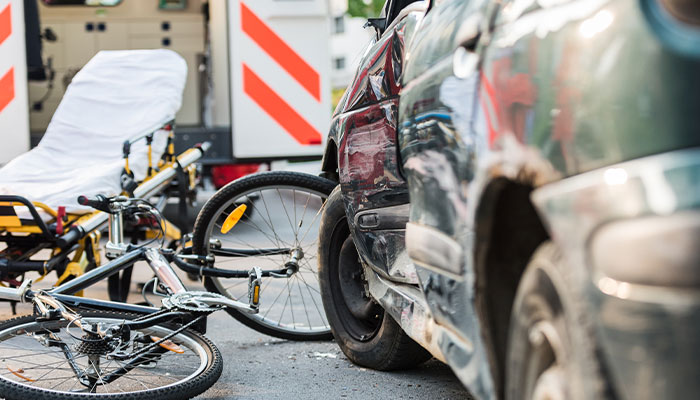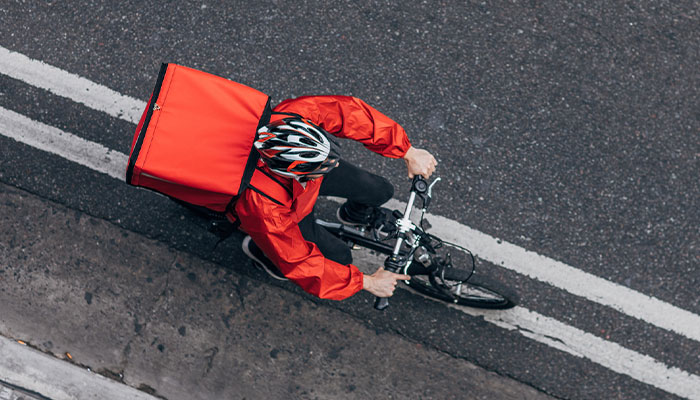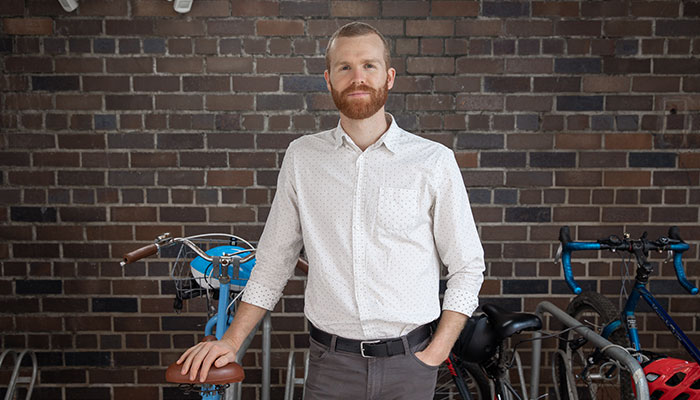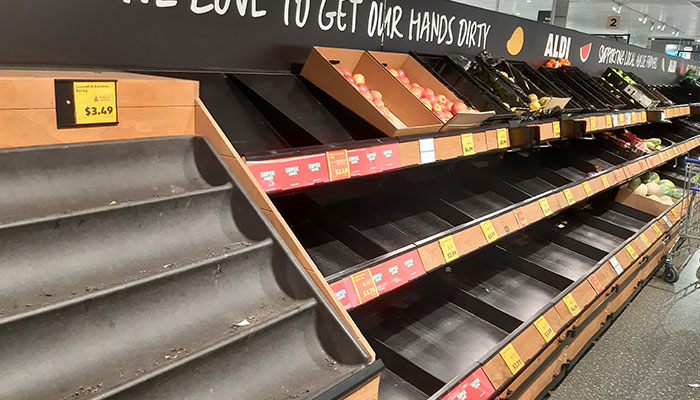Food delivery cyclists are being injured at much higher numbers than official reports show, according to a new study that used hospital records to try to uncover the real extent of delivery-related cycling injuries in these gig economy workers.

Out for the count: Official data is substantially lower than the real number of cycling-related injuries, the researchers found.
SafeWork NSW reported 37 pedal cycling injuries associated with commercial delivery in 2019-2020 state-wide – but a pilot study in just one Sydney hospital emergency department (ED) over a similar period by researchers at Macquarie University and St Vincent’s Hospital Sydney identified at least 43 cycling-related injuries.
“Safe Work NSW uses police and workers’ compensation records to identify injuries to food delivery riders, but our research shows that this data is substantially lower than the real number of cycling-related injuries,” says Dr Mitchell Sarkies, a Research Fellow at the Australian Institute of Health Innovation at Macquarie University and lead author of the study.
The researchers analysed medical records for all 386 adults treated for cycling-related injuries at St Vincent’s Hospital Sydney emergency department between May 2019 and April 2020, comparing commercial versus non-commercial cyclists.
“For 172 of these records, 46 per cent, we couldn’t confirm their work status; but of the remaining records, we were able to identify 43 (12 per cent) commercial delivery cyclists and 153 (42 per cent) non-commercial cyclists,” says Dr Sarkies.
Vulnerable group
A recent Deloitte study for Uber Eats found that one-third of consumers surveyed across Asia Pacific use a restaurant or meal delivery service, with seven per cent of consumers using delivery once a week.

Risk factor: Most injured cyclists, commercial and non-commercial, were male, the research found.
This huge growth in food deliveries has led to an increase in gig economy workers without basic entitlements such as workers’ compensation or paid leave for sickness or injury, according to the NSW Select Committee on the Future of Work’s April 2022 report on the Gig Economy.
The report examined the compensation entitlements following deaths of five food delivery cyclists on Australian roads in October and November 2020, four of these in Sydney.
“The cyclist who delivers our Friday night takeaway receives next to none of the conditions long considered fair and decent across Australia,” wrote the Committee Chair Daniel Mookhey in the report’s foreword.
- Please explain: Why is petrol so expensive
- What does Elon Musk's takeover of Twitter mean for free speech?
Pay is often per-delivery and can include a commission, so cyclists may take risks to increase their delivery rate and thereby improve their income.
Dr Sarkies often cycles in Sydney and became interested in exploring the extent of injuries in food delivery cyclists after noticing several riders taking risks to get through traffic more quickly.
“We know from other road safety research that you’re more likely to make mistakes when you’re under pressure,” says Dr Sarkies.
It is likely that there are similar numbers of cyclist injuries presenting across other major Sydney hospitals.
He says that commercial cyclists were 13 times more likely than non-commercial cyclists to present to the ED between 8pm and midnight than the early hours of the morning, suggesting these injuries occurred during the busiest evening meal delivery times.
“We noticed anecdotally in several cases, workers were injured, perhaps from crashing or coming off their bike, but they kept delivering to the end of their shift before going to the ED and discovering they had a concussion or fracture,” says Dr Sarkies.
Demographics of cyclists
Most injured cyclists (commercial and non-commercial) were male, with delivery cyclists more likely to be younger, and 11 times more likely to have a primary language other than English.

High stakes: Dr Mitchell Sarkies (pictured) says road safety research shows a person is more like to make mistakes when under pressure.
Most non-commercial cyclist injuries were funded by Medicare, but over a quarter of the commercial cyclists’ ED presentations (26 per cent) were not eligible for Medicare, and a further 37 per cent of commercial cyclists’ treatment was funded by compulsory third-party insurance schemes where a motor vehicle was involved.
“These figures support previous claims that suggest most commercial delivery cyclists are temporary migrants in Australia,” Dr Sarkies says.
Food delivery cyclists are typically engaged as independent contractors responsible for their own work-related costs, including insurance.
“This just shifts the cost of treating these injuries away from the workers’ compensation scheme, sometimes to compulsory third-party motor vehicle insurance if that applies, or the hospital would just bear the costs of treating patients who weren’t covered by Medicare,” says Dr Sarkies.
Dr Sarkies says the study demonstrates that hospital ED administrative and medical records hold pertinent information that can be used to uncover a hidden epidemic of delivery rider injuries.
“It is likely that there are similar numbers of cyclist injuries presenting across other major Sydney hospitals, so further research is needed to confirm the real extent of injury to delivery cyclists.”
Dr Mitchell Sarkies is a Research Fellow at the Australian Institute of Health Innovation



